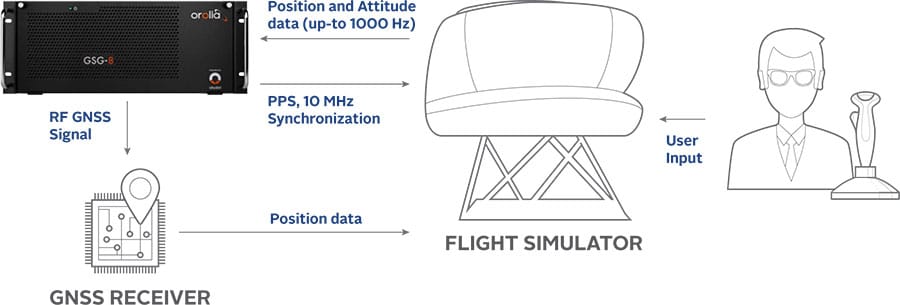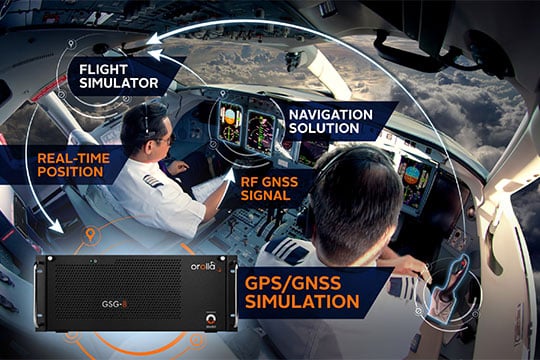# Case Studies
Safran's GSG-8 GPS/GNSS Simulator Trains Pilots to React to Real-World Situations
When Failure is Not an Option
Military aviation programs provide standard pilot training to ensure that they can handle fighters, drone swarms and other advanced threats. But as they run complex flight training scenarios and face off against live and virtual adversaries, what may be overlooked is the value of using GPSGlobal Positioning System is a navigation satellite system. See also/GNSS simulation to duplicate actual cockpit instruments, rather than relying on facsimile instruments.
A GPS/GNSS simulator makes it possible to simulate the actual GPS signal required by the cockpit navigation instruments. This approach offers several advantages to the trainee as well as to the engineers developing the flight simulator.
For the trainee, the advantage is that he is trained using the identical instruments as those in the actual airplane. Not only will the instruments look exactly the same, but the user experience will also be the same – providing the same feedback as a real-world experience.
For the engineer developing the flight simulator, the advantage is no less important. When creating a facsimile instrument, the engineer must make a trade-off between development costs and the fidelity of the simulation. Any trade-off or compromise can be detrimental to the training quality, which will inevitably impact the trainee’s readiness to handle a real-world situation. Using a GPS/GNSS simulator lets the engineer design more effective flight simulation programs without compromising quality.
Using a real navigation instruments may also reveal unexpected behavior from the instrument, which helps the pilot to be prepared for this possibility. If any conditions involving the plane dynamics are not properly handled by the navigation unit, the pilot can obtain actual feedback from real navigation instruments, which could differ from feedback provided by a facsimile instrument.
Here is an example of Orolia’s GNSSGlobal navigation satellite system (GNSS): A general term describing any satellite constellation that provides positioning, navigation, and timing (PNT) services on a global or regional basis. See also simulation approach in action. A large military avionics firm wanted a flight simulator to train pilots to react to real instrument behavior. Since facsimile instruments cannot duplicate actual instrument behavior and are subject to change when new firmware is introduced, the customer began by designing a life-sized cockpit with full instrumentation mounted on actuators. Safran’s GSG-8 GPS/GNSS simulator was integrated in the flight simulator to reproduce the GPS/GNSS dynamics for the airplane in real-time using hardware-in-the-loop (HWIL) techniques.

Because the pilot steers the aircraft in real time, the GPS simulator must also simulate GPS signals in real time, forming an HWIL integration. This integration enables the flight simulator to integrate the actual navigation unit to provide a very realistic environment for the trainee.
The customer chose Safran’s GSG-8 advanced simulator for several reasons: advanced features, performance, HWIL integration capability, and surprisingly affordable cost. Today, they are training their pilots with real-world instruments that they will recognize in the actual plane. The result: better trained pilots who are prepared for real situations, superior mission readiness and maximum safety for military aircraft operations.


